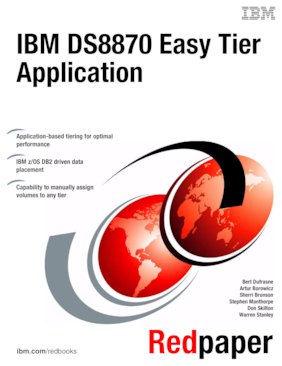Abstract
This IBM® Redpaper™ publication describes the concepts, functions, and practical usage of IBM Easy Tier® Application.
IBM Easy Tier Application is part of the overall Easy Tier offering. Initially, the overall Easy Tier function was designed to automate data placement throughout the storage system disks pool. It enables the system, automatically and without disruption to applications, to relocate data (at the extent level) across up to three drive tiers. The process is fully automated. Easy Tier also automatically rebalances extents among ranks within the same tier, removing workload skew between ranks, even within homogeneous and single-tier extent pools. The Easy Tier Application feature allows for direct data placement, when desired. The storage administrators can use the DS command-line interface (DS CLI) to directly assign distinct application volumes to a particular storage tier. Easy Tier Application also features a software-defined storage data placement interface that can enable specific applications running on IBM System z® to direct more optimal placement of the data by communicating important information about current workload activity and application performance requirements. Specifically, with DS8870 R7.4, it is possible for IBM DB2® applications in IBM z/OS® environments to give hints of data placement to Easy Tier, at the dataset level.
This paper is aimed at those professionals who want to understand the Easy Tier Application concept and its underlying design. It also provides guidance and practical illustrations.per is aimed at those professionals who want to understand the Easy Tier Application concept and its underlying design. It also provides guidance and practical illustrations.
Table of Contents
Chapter 1. Easy Tier Application overview
Chapter 2. Easy Tier Application concepts and logical architecture
Chapter 3. Easy Tier Application implementation and usage
